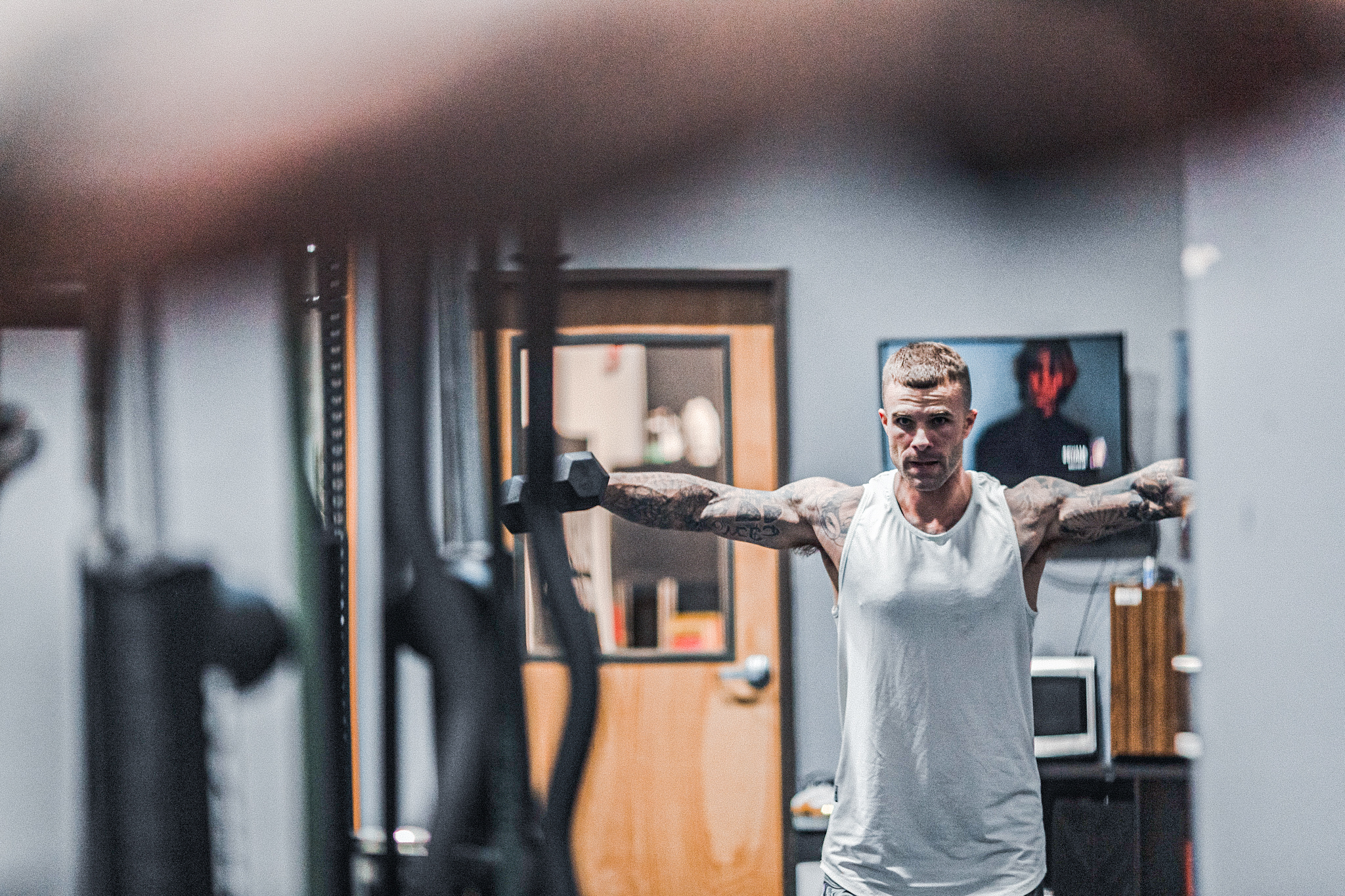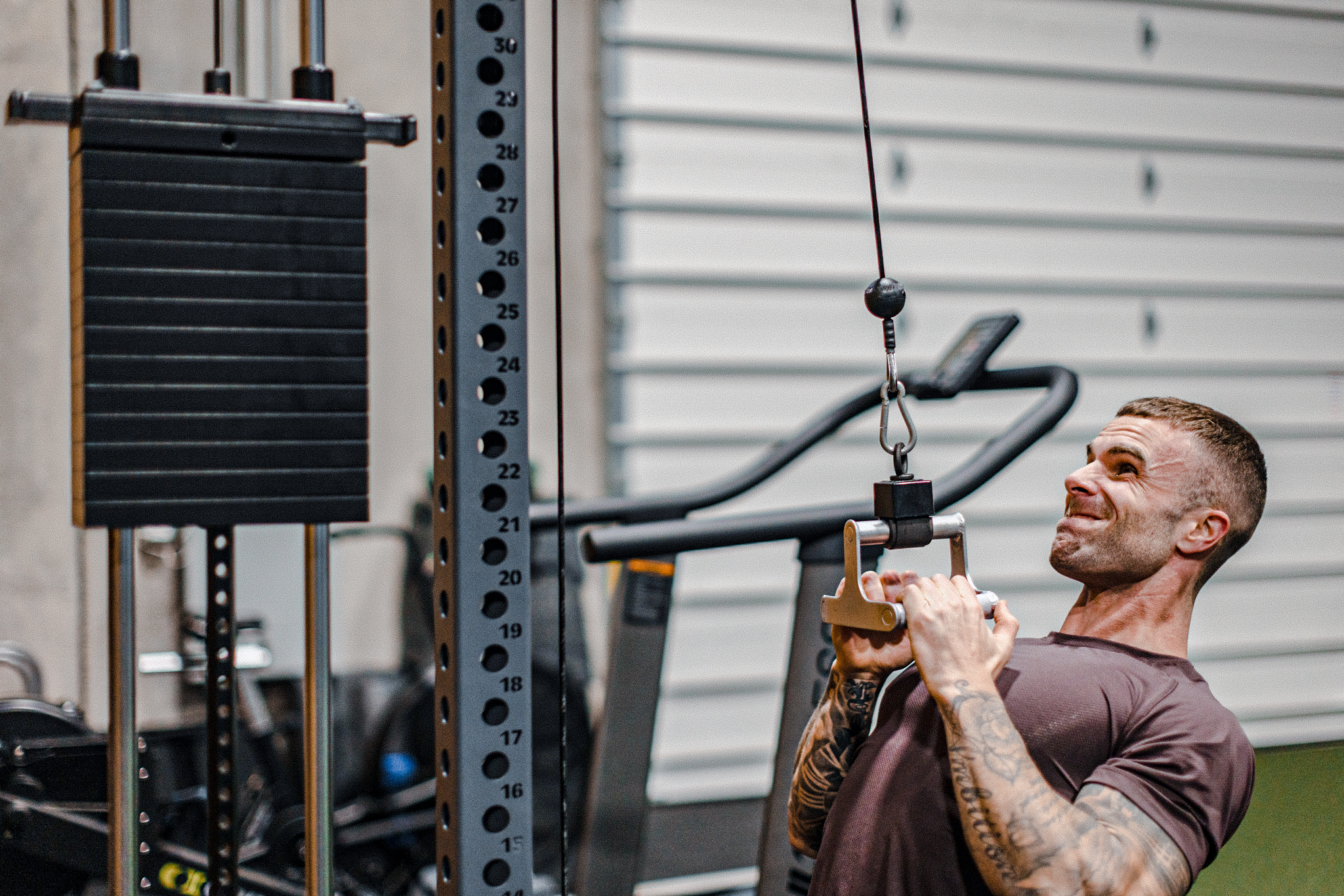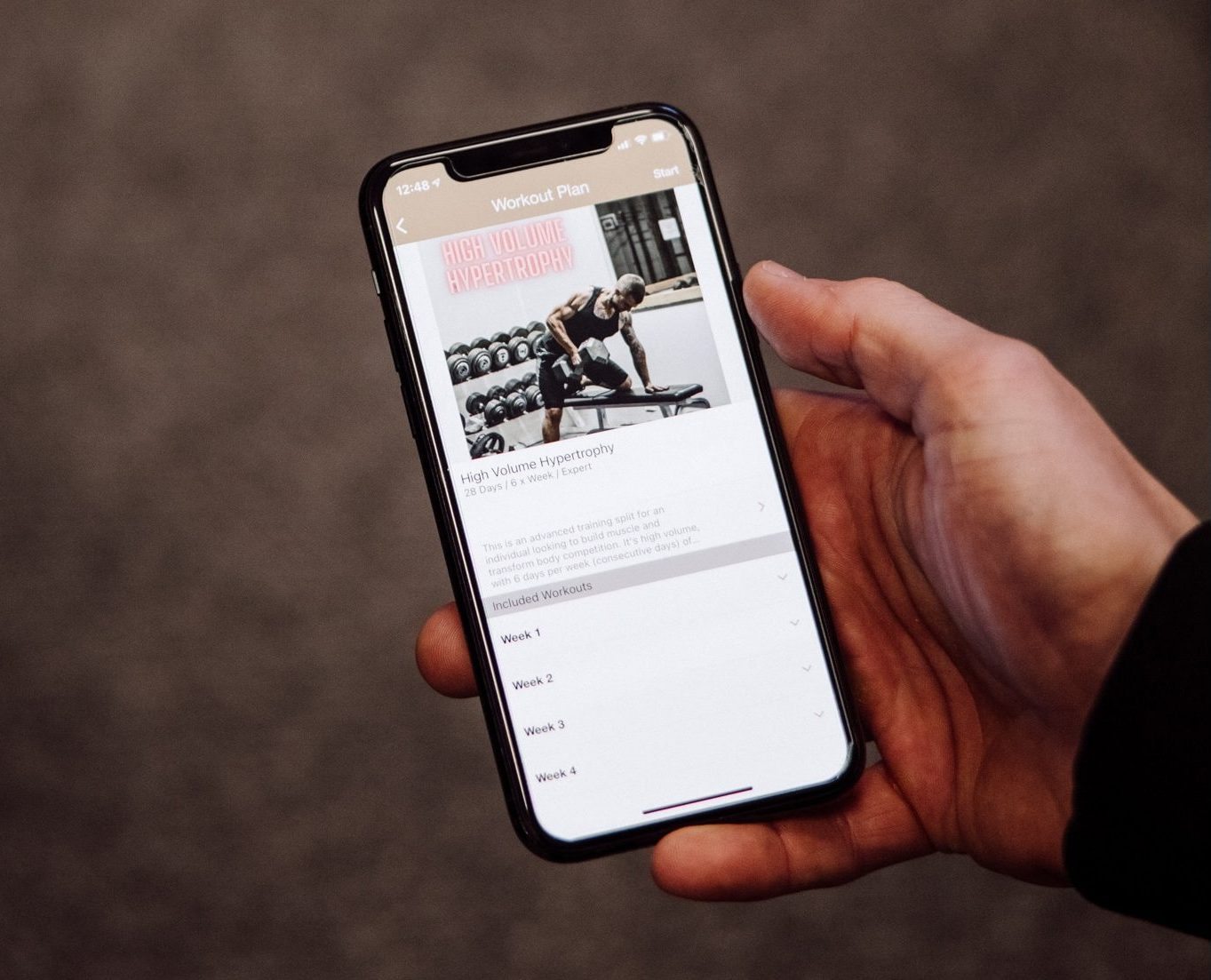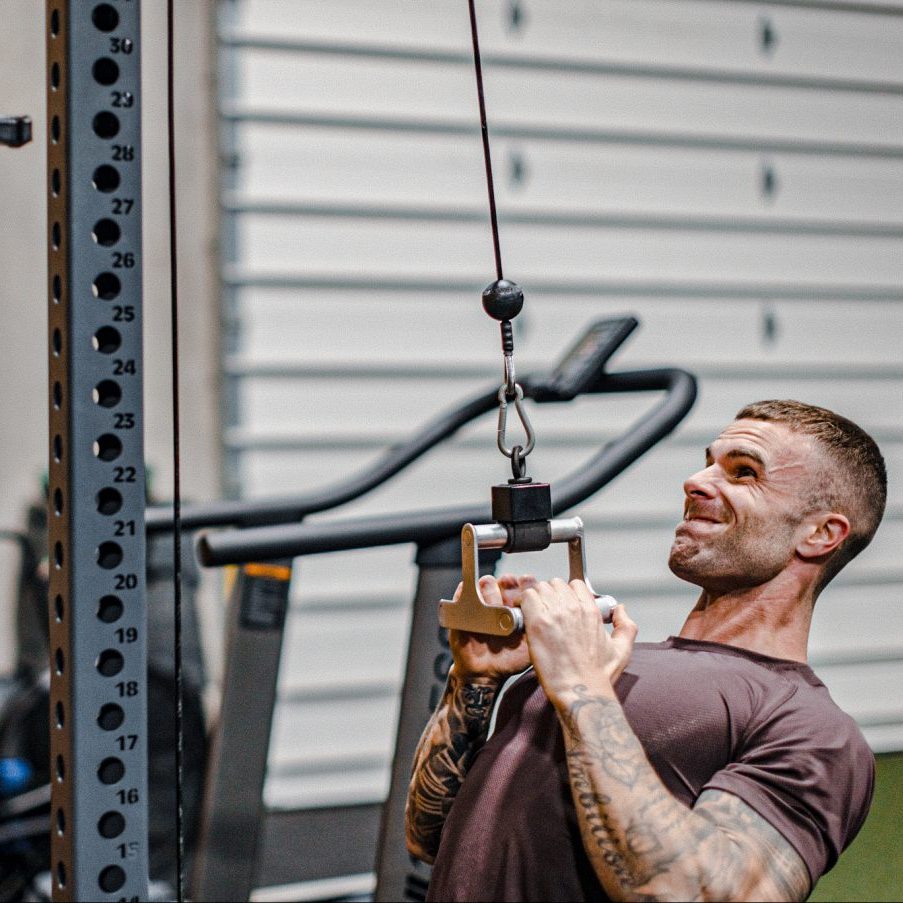How to Intensify Your Workout: 7 Proven Training Techniques

What happens when you feel your exercise routine start to fall flat? You spend countless hours in the gym, yet you’re not seeing the results you want. Training intensifiers are designed to supercharge your gains and help you get the most out of your workout.
A training intensifier is simply a method that allows you to get closer to failure, go beyond the initial point of fatigue, and extend your sets for longer durations. This can also create an exciting new challenge that can make training more fun.
Below, we’ve highlighted some of the benefits of training intensifiers and information on how to increase intensity of workout:
Training To or Near Failure
Research has been conducted on reaching near failure, but intentionally not going to complete failure.
In fact, Dr. Brandon Robert (TCM’s Chief Science Officer) and I did a research review podcast on this exact topic.
In the study we reviewed, on training to failure, the researchers concluded that there’s no significant difference between training to failure and non-failure.
This means that training to failure is NOT required for building strength. Which is great because injury risk and the overall level of fatigue drops significantly when we lower effort from 100% to 80 or 90% (i.e. going from training to failure to training just shy of failure).
The study did not see much difference in muscle growth either – however, they don’t always factor in volume when doing these research studies.
With all this, we can determine that 80-90% of your training should not be to complete failure. It’s best to use the RPE or RIR scale system and keep yourself 1 to 3 reps shy of failure on the majority of your training.
However, you need to go to failure at times in order to properly use those scales. In other words; if you don’t know where failure is at, you cannot determine how close to it you actually are.
This also would mean I’m suggesting that the 10-20% of training left should be taken to failure.
I’m suggesting this because AT LEAST 10-20% of your training is definitely just accessory and isolation exercises, which have a far lower risk of injury and lower overall degree of fatigue.
Also because…
- We know that some people have a hard time gauging training effort
- There are multiple studies pointing to failure training being advantageous for muscle growth
- This may allow us to squeeze out more volume, which does increase hypertrophy…
Therefore, ultimately, we should still leave some room for failure training.
The key takeaway:
» Using intensifiers in your training, that allow you to take a set to complete failure, may be a smart way to improve your results and body composition at times.
Training To and Beyond Fatigue
Training to and beyond failure means manipulating the way you do an exercise, by using an intensification technique or training intensifier, so that you can get to the point of failure and then keep going
Sounds impossible, right…? Yeah, because in theory it is. How could you keep going, if you’ve reached failure?
Well, for example, one of the methods is called a mechanical drop set – this is where we’d change the angle of our body, the bench, load, etc. to give us a mechanical advantage, allowing us to continue going on with the set.
For example: A DB Bench Mechanical Drop Set — DB Incline Bench → DB Flat Bench → DB Decline Bench, all using the same load and taking each set to, or near, failure.
Because you’re lowering the angle of the bench, but keeping the same weights in your hands, you can continue pressing without stopping – even though you may have reached failure on the more difficult angle you repped out, prior
The key takeaway:
» We can use training techniques and intensifiers to extend a set further without changing the load. This accomplishes more volume and more mechanical tension within the muscle (two key drivers of muscle growth).
Extending Set Duration
Extending set durations creates more mechanical damage and tension, requiring the body to repair and build more tissue.
We know that time under tension and muscle damage are both not that important for growth. But they’re associated with other things that cause growth.
For example, training volume leads to growth because it increases the amount of work done and weight lifted. But when accomplishing more volume, muscle damage is a byproduct. Therefore muscle damage may not literally cause more growth, but it is still associated with it and can be a proxy that tells you you’re doing the right things in your training.
To extend a set, we can use drop sets, myo reps, mechanical advantages, and forced reps with a spotter. The main key here is that we avoid injury and decreased performance due to increased fatigue.
We can accomplish this by knowing when is the right time to do extended sets.
If you have a leg day and your first exercise is a barbell back squat, and you decide to do a drop set on your first set, do you think the rest of your sets will be good? No, because performance will indefinitely drop after performing that drop set. There’s also a potential risk of getting hurt due to poor technique and fatigue, as well.
Even if you don’t hurt yourself, you’re still more likely to lift less weight in the sets that follow and that leads to a drop in total volume (this is backed by research as well). This will ultimately lead to a drop in results.
If you do it on your final set of squats, would it be effective?
No. Because it’s a compound lift with a high injury risk. The rest of your session will fall victim to the fatigue it generated, leaving you lifting less as the workout progresses.
The key takeaway:
» Extended sets can be helpful to increase volume (and just have fun). But it should be reserved, for the later exercises within a training session or when it doesn’t interfere with the workout.
The latter would apply if you did a bench press drop set, but have no more exercises within that workout that would have their performance compromised due to that bench press drop set.
Enjoying Your Training Again
Having fun is one of the most important aspects of exercising. It’s hard work you’re doing with purpose, but if you hate the process, you won’t stay consistent or work your hardest during that process, either.
The key takeaway:
» Making your training exciting, challenging, and enjoyable is the key to being more motivated to train, which will lead to harder training and better consistency week to week, month to month.

The 7 Training Techniques To Intensify Your Workouts:
Are you ready to learn how to increase the intensity of a workout? Check out these training techniques, with tutorials you can follow to make a difference in your routine.
-
Drop Sets (Load Reduction, Mechanical, & Myo-Reps)
- Check out our tutorials: DB Lateral Raise Drop Set, BB OHP Drop Set, DB Curl Mechanical Drop Set, DB Bench Press Mechanical Drop Set, and Seated Cable Row with Myo Reps.
-
Extra and Partial ROM Extended Sets
- Check out our tutorials for Extended ROM variations: Deficit RDL’s, Deficit Push Ups, Front Foot Elevated Bulgarian Split Squat,
- And our tutorials for Partial ROM Extended Sets: Chest Supported Shoulder Lateral Raise Partials, DB Hammer Curl + Extended Partials, DB Bench Press + Extended Partials, Barbell Over and Back Partial Presses,
-
1 ¼ and 1 ½ Reps
- Check out our tutorials: 1.5 Rep Bulgarian Split Squats, 1.5 Rep BB RDL, 1.5 Rep Deficit Push Ups 1.5 Rep DB Bench Press, 1.5 Rep Leg Extensions, and Barbell 1.5 Rep Curls.
-
Accommodated Resistance
- Check out our tutorials: Deadlift With Chains, Banded Barbell RDL, BSS w/ Resisted Knee Extension (Leg Extension Substitute) Band Resisted Hanging Leg Raise, and Speed Sumo Deadlift (Against Bands).
-
Cluster Sets
- Check out our tutorials: Front Squat Clusters and Barbell OHP Clusters
-
Contract and Stretch Supersets
- Check out our tutorials: Seated Leg Curl + RDL, Straight Arm Pull Down + Seated Cable Row
-
90|60 Contrast Sets
- Check out our tutorial: Front Squat w/ Weight Releasers (Contrast Sets: 1 + 6-8),
Want to Learn How to Intensify Your Workout With a Structured System?
If you’re ready to take on more advanced training methods and want to follow a structured system, download The Tailored Trainer App. Get daily workouts delivered right to your phone that teach you how to intensify your workout and much more.





















































































































































































































































































































































































































































































